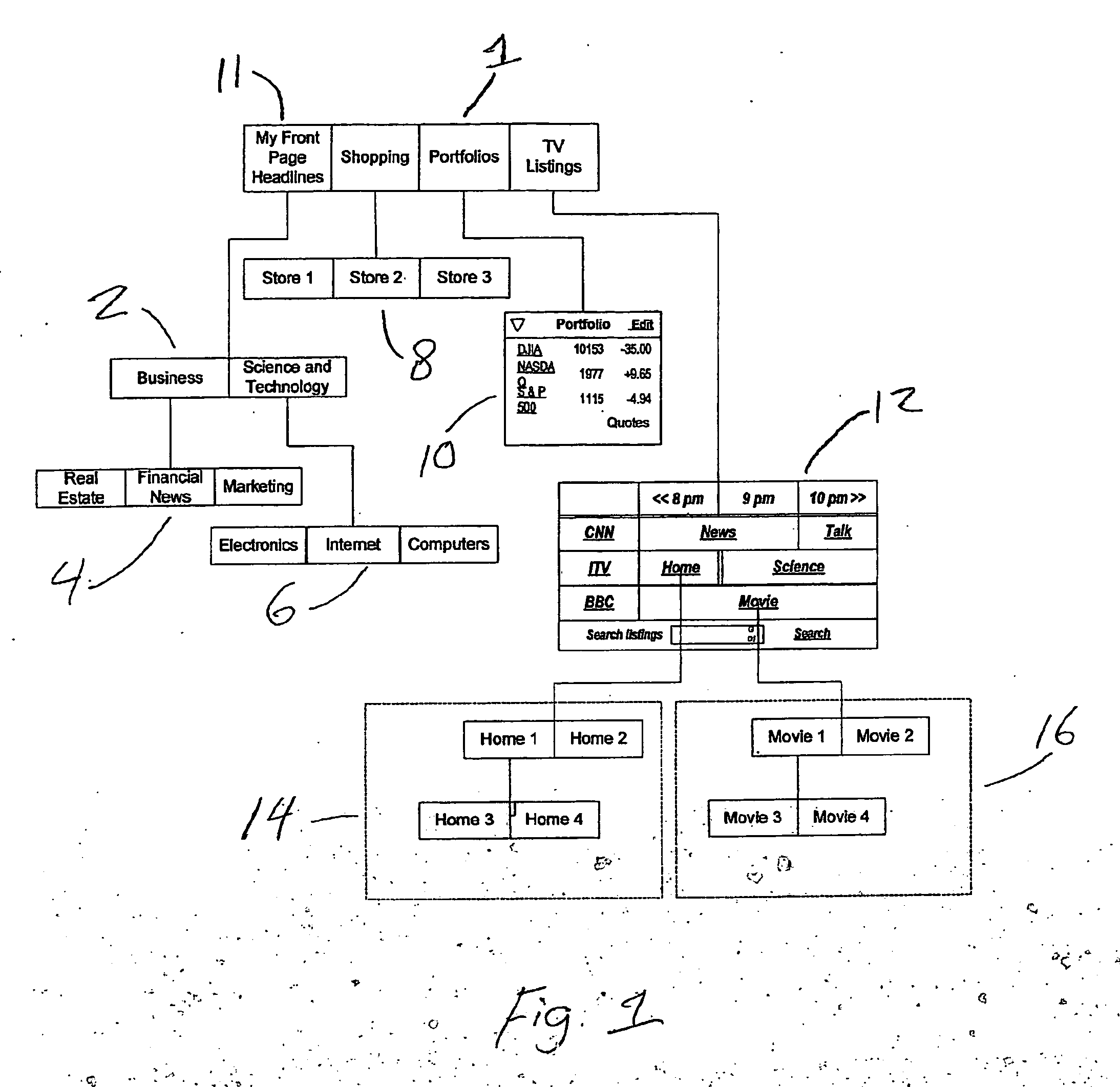Flexible, dynamic menu-based web-page architecture
a dynamic menu and web page technology, applied in memory systems, program control, instruments, etc., can solve the problems of difficult navigation through large amounts of data, lack of rich, highly developed features and functionality found in traditional graphical user interfaces, and difficulty in building web pages, etc., to achieve easy integration into any location, smooth and automatic adjustment in size
- Summary
- Abstract
- Description
- Claims
- Application Information
AI Technical Summary
Benefits of technology
Problems solved by technology
Method used
Image
Examples
Embodiment Construction
[0044] The present invention relates to displaying and navigating information in web browsers as hierarchical, spring loaded DHTML menu systems that can easily fit into any location on a web page, and which smoothly and automatically adjusts in size to fit within the boundaries of as containing web page element.
[0045] In a preferred embodiment of the invention, each time a user goes to a web page, the FlexMenuPage algorithms dynamically builds and inserts menus into the page, or the menus are restored from a cache mechanism. The user can enter a menu tree through any displayed menu(s), normally the top menu or any permanently displayed menus.
[0046] The menu system logic may be dynamically included in each web page where menus will be used, and can be included inside each web page directly, usually in a script form. The logic can be also loaded from a disk or storage device local to the web browser.
[0047] This logic can be encapsulated in any number of web browser HTML DOM manipul...
PUM
 Login to View More
Login to View More Abstract
Description
Claims
Application Information
 Login to View More
Login to View More - R&D
- Intellectual Property
- Life Sciences
- Materials
- Tech Scout
- Unparalleled Data Quality
- Higher Quality Content
- 60% Fewer Hallucinations
Browse by: Latest US Patents, China's latest patents, Technical Efficacy Thesaurus, Application Domain, Technology Topic, Popular Technical Reports.
© 2025 PatSnap. All rights reserved.Legal|Privacy policy|Modern Slavery Act Transparency Statement|Sitemap|About US| Contact US: help@patsnap.com



